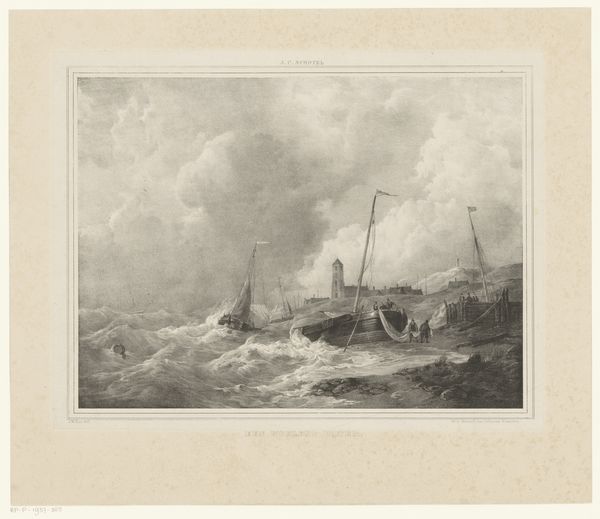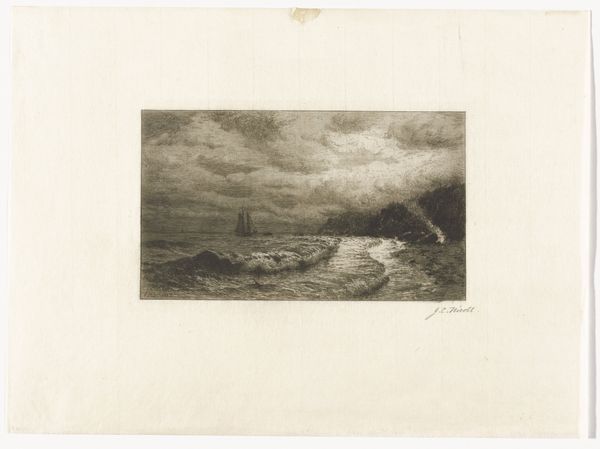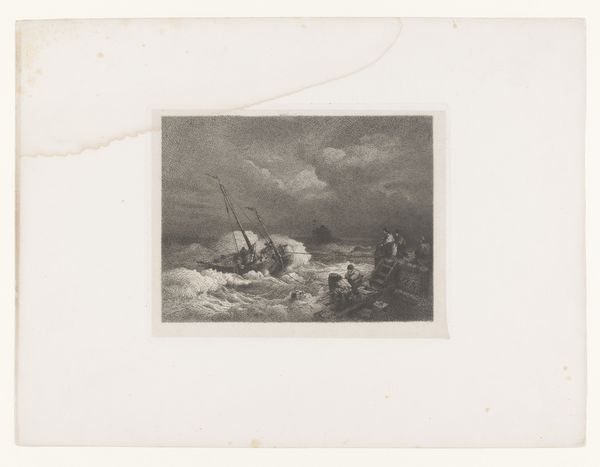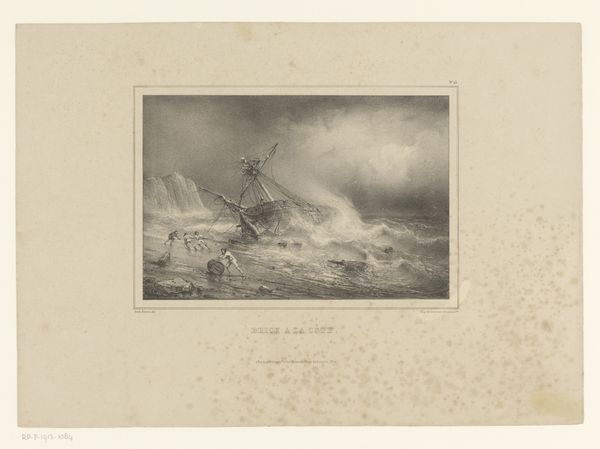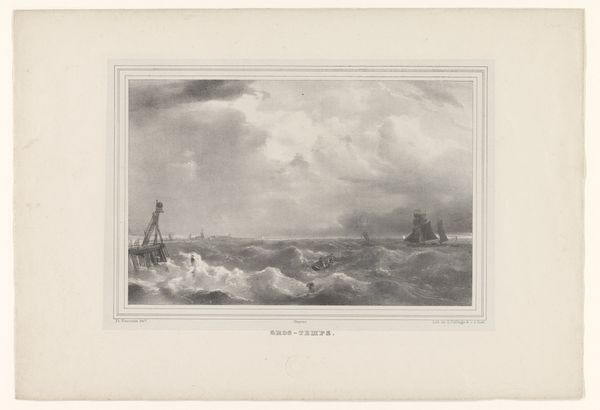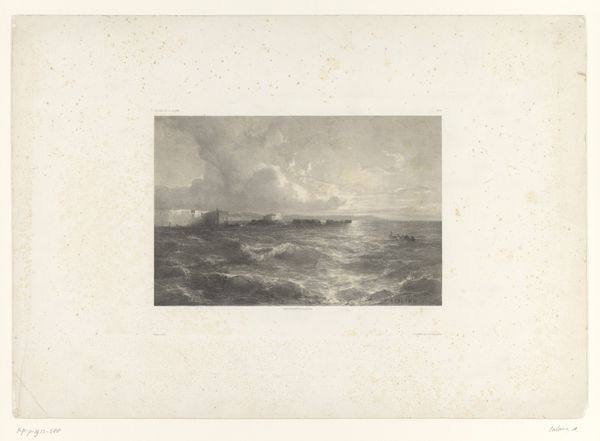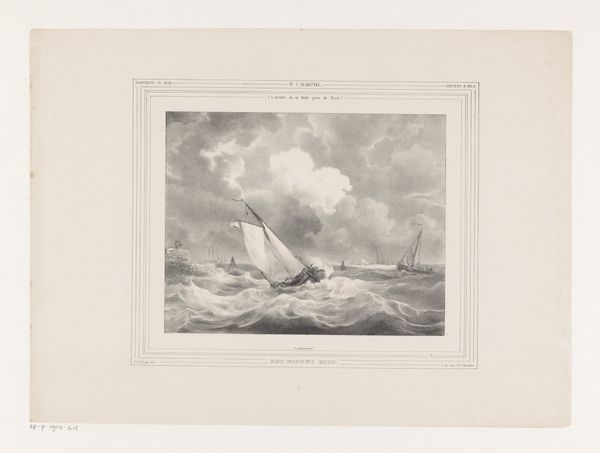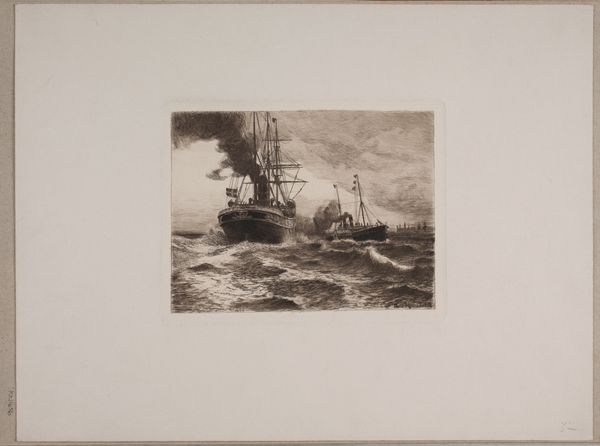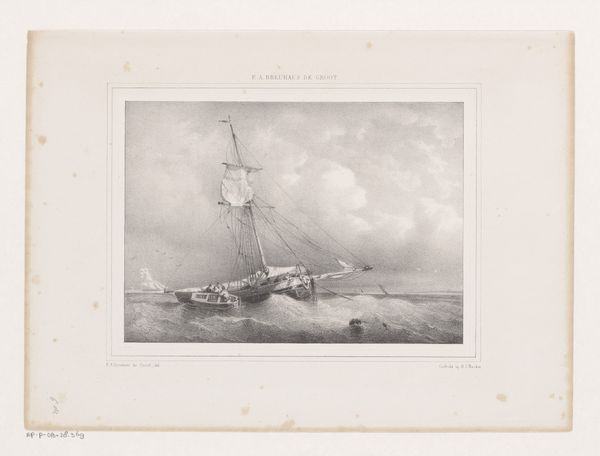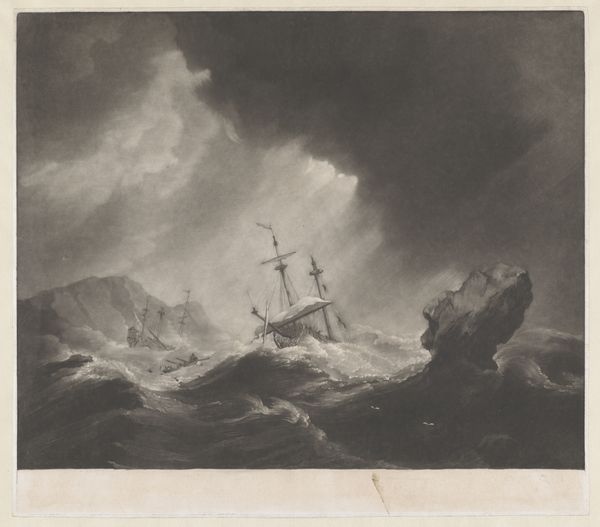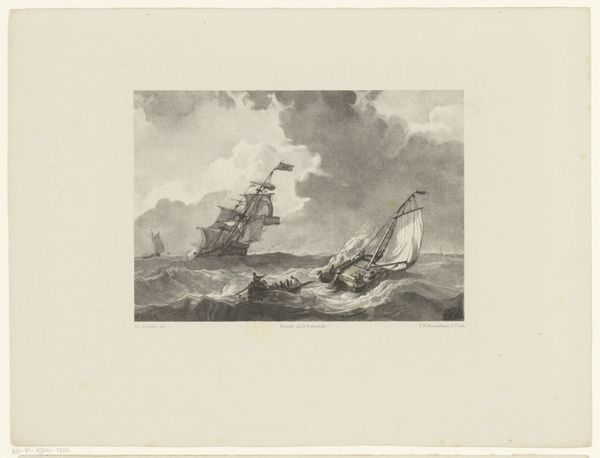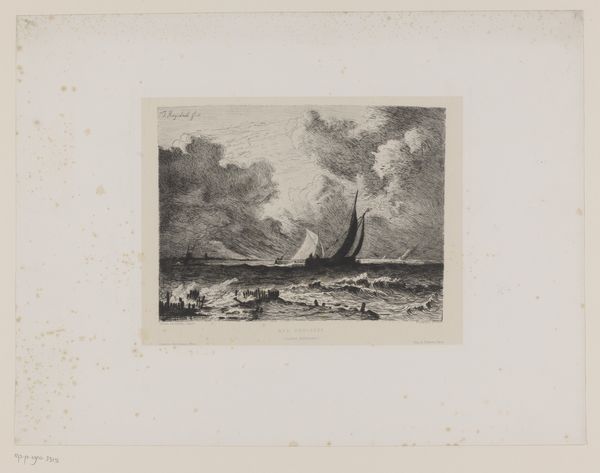
print, engraving
#
narrative-art
# print
#
landscape
#
romanticism
#
line
#
cityscape
#
engraving
Dimensions: height 260 mm, width 335 mm
Copyright: Rijks Museum: Open Domain
Curator: Franciscus Bernardus Waanders' print, dating from around 1822 to 1845, captures a rather dramatic scene titled "Zeilschepen op stormachtige zee," or "Sailing Ships on a Stormy Sea." The location tells us this print is held in the collection of the Rijksmuseum. What is your first reaction to it? Editor: It's undeniably turbulent. The composition alone, with the sky taking up almost half the picture plane and rendered with these swirling lines, evokes an immense sense of precarity and the raw power of the sea. The shades emphasize just how threatening that weather must have been. Curator: Indeed. Considering the socio-political context, seascapes like these held a significant place in Dutch identity, reflecting the nation's relationship with maritime power and trade, but also the constant threat of the water. How might the display of such a piece impact the national narrative? Editor: I see this piece as deeply ingrained within the romantic idealization of nature and its capacity to be both beautiful and destructive. Those small boats and the ship really highlight human vulnerability against the sheer force of nature. It even invites questions of class—were these the ships and boats of the wealthy or of more working class sailors? How does art of this period help define the lines of economic standing? Curator: It certainly taps into the Romantic movement’s fascination with the sublime. But it also served a purpose in reinforcing a specific view of the Netherlands’ power, and perhaps downplaying the colonial ventures that funded so much of this maritime prowess. Editor: I find myself focusing on how Waanders' engraving uses such precise line work to create movement, despite the still nature of the image. Look how the waves appear to crest and crash, almost mimicking the chaos they would be stirring. This approach also highlights the lack of a singular viewpoint. Whose narrative are we meant to be adopting when we examine this work? Curator: Those questions become crucial as museums like the Rijksmuseum become spaces for more nuanced representation. This piece provides a stark visual reminder of the complexities woven into Dutch history. Editor: Exactly. What a complex depiction; as we interpret images, there's the chance to create a future dialogue from these representations of the past.
Comments
No comments
Be the first to comment and join the conversation on the ultimate creative platform.
